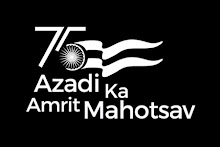Maharashtra’s gross state domestic product (GSDP) as per advance estimates at constant (2004-2005) prices is expected to grow at 8.7% during 2013-14, with the services and industry sectors growing at 9.3% and 8.8% respectively. The GSDP during 2012-13 is Rs.8,25,832 crore up by 6.2% against Rs.7,77,791 crore in 2011-12. From August 1991 to March 2012, a total of 4,246 FDI projects with a Rs.97,799 crore investment were approved, of which 45% (with an investment share of 51%) are commissioned and 10% are under execution.
The state ranks fifth in India according to the India Human Development Report, 2011, preceded by Kerala, Delhi, Goa and Punjab and has a literacy rate of 82.3% against the national average of 73%. Also, Maharashtra’s decadal population growth rate has reduced by 6.74 percentage points during 2001-11 as against 3.8 per cent points at the national level - the highest reduction in the population growth rate recorded in the state.
Agriculture, which employs 52.7% people as per the 2011 census, grew by minus 1% in 2012-13 (at constant 2004-5 prices) and is expected to grow at just 4% in the present fiscal, indicating the extent of agrarian distress. The birth rate, infant mortality and death rate were almost stagnant at 16.6, 25 and 6.3 respectively in 2012 compared to 16.7, 25 and 6.3 in 2011. High inflation during 2012-13 with lower industrial outputs and structural bottlenecks have affected the manufacturing sector, which saw stagnant production resulting in almost zero growth. Construction activities have slowed down and hence growth in the sector was 8.6% compared to 11.5% in 2011-12. The industry sector has grown at a paltry 2.7%. The state government also has a Rs.3,017 crore revenue deficit as against a projected surplus of Rs.184.38 crore.
So, what is happening to the Maharashtra growth story? That the state is a land of extremes, with a focus on physical infrastructure while overlooking the need for a robust social infrastructure, may be evident from these indices. For instance, only 77% schools have functional girls toilets in Maharashtra, which boasts of being a pioneer when it comes to girls education. Maharashtra is also the most industrialised state with 45.2% urban population (up from 28.22% in 1960-61 and 42.43% in 2000-1).
The slum population in the state is 1.18 crore-- the highest (18%) in India. The proportion of slum population to total urban population in Maharashtra is 23.3% in 2011 down from 27.3% in 2001.
“Maharashtra is a relatively fast growing and healthy economy but with many structural weaknesses in areas like health, education, public finances and regional inequalities,” said Neeraj Hatekar, professor with the department of Economics, University of Mumbai. He stressed on the need to focus more attention on social infrastructure like schools, education, health and added that even if the infant mortality rate (IMR) was shown at just 25, it could be much higher due to large-scale under-reporting in government data.
Hatekar said that while poverty reduction rates were good, malnutrition, debt as a percentage of GSDP (18.4%) and high revenue expenditure remained areas of concern. Regional imbalances, with industry and growth focussed on areas like Mumbai, Thane, Pune and Nashik also needed to be looked at carefully, noted Hatekar, adding that this was not just a Western Maharashtra versus Vidarbha debate, with huge inequities being present even in Western Maharashtra.
While the area under crops like wheat, jowar, bajra, pulses, foodgrains and groundnut, has fallen in 2012-13 as compared to the previous year, sowing of cotton, pulses, rice and water guzzling sugarcane has risen. The average size of operational holdings has reduced from 4.28 hectare in 1970-71 to just 1.44 hectare in 2012-13, indicating fragmentation and increasing financial unviability of agriculture.
The population density has risen from 257 people per square km in 1990-91 to 365 in 2012-13, while the area under forests has declined from 63,544 square kms in 1960-61 to 61,369 in 2012-13.
By March 2013, more than 99% villages were connected by all-weather or fair weather roads in the state, which has a 2.43 lakh km road length (excluding that maintained by local bodies). However, the number of vehicles on road in Maharashtra has risen from 3,11,669 (618 per lakh of population) in 1971 to 2,28,39,650 in 2014 or 20,504 per lakh population. The mismatch effect is evident. While the number of vehicles on roads has increased by leaps and bounds, the road infrastructure has not kept pace with this jump. In 1971, the number of vehicles per km of road length was just five but has shown a consistent rise—six in 1981, 15 in 1991, 31 in 2001 and 86 and 94 in 2013 and 2014 respectively.
However, indicating rising financial inclusion, the number of banking offices has increased from 1,471 (450 in rural areas) in 1970-71 to 9,253 in 2012- 13 (2,365 offices for the rural population).
The median age of the state population is 27.1 years (i.e. 50 % of the population is below 27 years of age) against 24.9 years at the national level compared to corresponding figures of 24.4 and 22.7 years in 2001 at state and national level respectively.
The railway route length has increased from 5,056 km in 1960-61 to 6,107 km in 2012- 13.







No comments:
Post a Comment